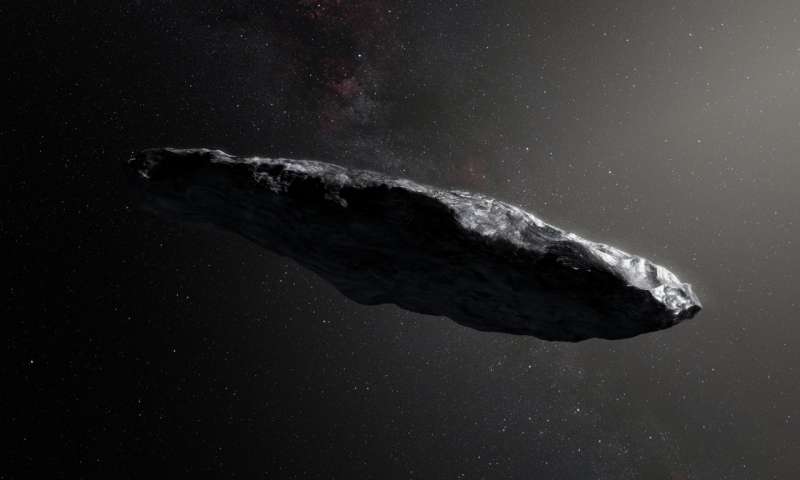According to a new study conducted by the Harvard Smithsonian Center for Astrophysics, the cigar-shaped asteroid Oumuamua could be an alien spacecraft. The team suggests it could be a “lightsail of artificial origin” sent on a journey by an alien civilization residing somewhere in deep space.
The study was published earlier this month, and it suggests that Oumuamua’s odd movement style, which was already studied earlier this year, and its “excess acceleration” could be of artificial nature, even though it was previously suggested that the cigar-shaped asteroid came from a binary star system.
“Considering an artificial origin, one possibility is that ‘Oumuamua’ is a lightsail, floating in interstellar space as a debris from an advanced technological equipment,” the team of researchers wrote in their paper. “Lightsails with similar dimensions have been designed and constructed by our own civilization, including the IKAROS project and the Starshot Initiative. The lightsail technology might be abundantly used for transportation of cargos between planets or between stars.”
The scientists who conducted the study even suggested it “may be a fully operational probe sent internationally to Earth vicinity by an alien civilization.” However, they also acknowledge that calling an asteroid an alien spacecraft is very “exotic.” The scientists behind this paper are postdoctoral researcher Shmuel Bialy and professor Abraham Loeb, director of the Institute for Theory and Computation at the Harvard-Smithsonian Center for Astrophysics.
Another study suggested other objects similar to Oumuamua will eventually enter our solar system, with some of them carrying the building blocks of life.
“The likelihood of Galactic panspermia is strongly dependent upon the survival lifetime of the putative organisms as well as the velocity of the transporter,” Manasvi Lingam and Loeb from this current study said in another paper published previously in the Astrophysical Journal. “Velocities between 10−100 km s−1 result in the highest probabilities. However, given large enough survival lifetimes, even hypervelocity objects traveling at over 1000 km s−1 have a significant chance of capture, thereby increasing the likelihood of panspermia.”
Panspermia is a hypothesis which suggests life on Earth came from microorganisms present in outer space which were unintentionally carried to our solar system and Earth by objects like dust, meteorites, and asteroids, according to the explanation on NASA’s website.
Oumuamua is the Hawaiian word for “pathfinder” or “scout.” The asteroid was discovered in October 2017 by astronomers using the PanSTARRS1 telescope, who spotted a glimpse of light coming from a strange direction and moving at an abnormally high speed.
What do you think? Is the cigar-shaped, interstellar object really an alien spacecraft? Let us know in the comments.





